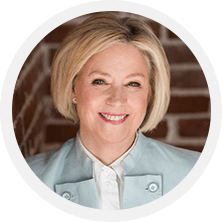Eileen McDargh [guest post]
The standard concept of sustainability is the capacity of biological systems to remain diverse and productive over time. Healthy wetlands and old growth forests are just two examples.
This notion of sustainability applies, not only to nature, but to human beings as well. When you think about it, humans are really biological “systems.” They are systems that sit in cubicles, drive to sales calls, conduct virtual meetings, perform surgery, write manuals, handle customers, and a host of other activities. Like old growth forests, groups of human beings need to be diverse in order to thrive.
Imagine an ocean heavily weighted with sharks. Because of the lack of diversity, in time, food would be depleted and the sharks would turn on each other. (Might sound like some companies you know!)
If everyone in an organization looked alike, spoke alike, and thought alike, in time the organization would shrivel and disappear. This is because, without diversity, it would lack the resiliency and, in turn, staying power that keeps great employees and clients, offers up innovation and collaboration, and fosters smart productivity.
From my vantage point as both a teacher and student of resiliency, I believe that resiliency of thought is the next horizon for D&I programs. And that bring us to ask this question: Do we both seek and listen to others whose THOUGHTS are different from ours?
The answer for one organization, as reported in the Los Angeles Times, is “No.” The article reported that, “Months before California’s new disability claims system debuted, a whistle-blower told his superiors it contained errors that could mar a successful launch. His predictions proved accurate.” Sadly, diversity of thought was NOT acceptable and, for EDD employee Michael O’Brien, reassignment was in order.
From my work within a variety of organizations, failure to listen to others who offer a contrary viewpoint can hamper progress, profitability, and performance. Here are two recommendations to encourage the fostering and acceptance of diverse thought.
(1) Ask for input from the youngest or newest employees. Here’s why. They come with fresh eyes, un-jaded by politics or personalities. Do something with the input and let them know what you did. Thank them for their input. Use what you can and let them know what pieces you cannot put into action and why. Do this on a regular basis and I guarantee you will create a wellspring of enthusiasm and commitment.
(2) Seek input from those “closest” to the action. Soldiers on a battlefield have a far different view of the terrain and the enemy than generals sitting in a war room. The truck driver who makes long-distance hauls knows more about what is needed in a dependable 18-wheeler than someone sitting in purchasing. Be sure to recognize all those who provide input and spread the word about their contributions. Create a “what did I learn today” tweet post that reflects a new way of looking at something. The more you encourage diversity of thought, the more resilient and sustainable the organization becomes.
Eileen McDargh is president of The Resiliency Group, an author of five books, and a highly acclaimed keynoter and master facilitator.
Sondra Thiederman can be contacted for virtual presentations and panel participation by e-mailing her here or calling 619-583-4478. For additional information, go to the Meet Sondra page on this site.
